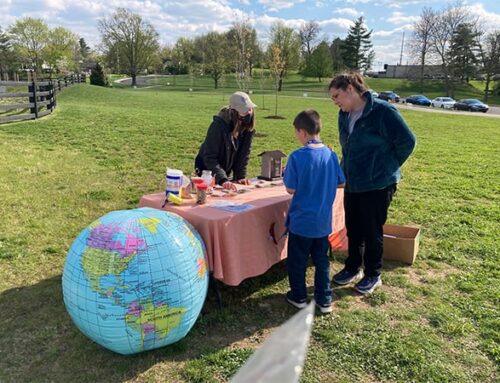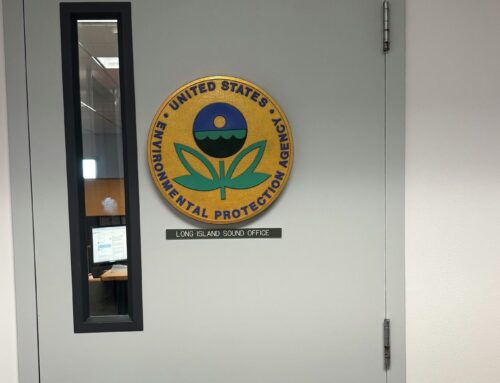Art, environment, conservation all part of new AMFA exhibit
July 5, 2025
The Earth and how we have treated it takes center stage in the latest exhibit at the Arkansas Museum of Fine Arts.
“The Long View: From Conservation to Sustainability: Works from the Bank of America Collection” assembles 89 photographs, lithographs, sculptures and paintings by 39 artists to tell the story of the environment and the role art has played in documenting it and advocating for its preservation.
Shown in the Harriet and Warren Stephens Family Gallery, the exhibit is thoughtfully laid out chronologically in four themed sections: “The Beginnings of Conservation,” “Push and Pull — Industry and Environment,” “The Emergence of Conservation Activism” and “Working Towards a Sustainable Vision.”
Works date from the mid-1800s through today and there are some heavy hitters among the artists, including Robert Rauschenberg, Grant Wood, Ansel Adams and more. Fun fact: Two of the artists with pieces in “The Long View” — “American Gothic” painter Grant Wood and German-born, 19th-century landscape painter Albert Bierstadt — have works in the museum’s permanent collection that are currently displayed in other galleries.
‘The Long View’” opens discussions around the environmental history of the United States including how it began, and it illustrates the positive impacts artists have made in how we view and protect our natural resources,” says Jennifer Jankauskas, a curator at the museum, in an email. “For example, early 19th-century photographs of Western landscapes led to congressional action safeguarding the Yosemite Valley in California and forming the National Parks System. Contemporary artists in the exhibition question overproduction and waste through their use of recycled materials and environmental pollutants.
“Through their art, the artists highlight past and current environmental issues, the impact humanity is having on our planet, and invite each of us to continue to think sustainably for the future.”
From the 19th century onward
Among the earliest pieces are 1844 lithographs by George Catlin of Native Americans on hunting expeditions. According to the accompanying text, Catlin had seen an Indian tribal delegation in Philadelphia and dedicated himself to using his photography to help preserve tribal customs.
Three prints by ornithologist and naturalist John James Audubon from 1845-1848 depict an ocelot, bison and a mink. Though Audubon has a complicated and troubling history — he owned enslaved people and is believed to have plagiarised one of his works — his inclusion seems fitting, since his wildlife art and conservation efforts would later inspire the founding of the National Audubon Society in 1895, 44 years after his death.
Painter Thomas Moran’s landscapes “Valley of Babbling Waters, Southern Utah” and “Lower Yellowstone Range,” from 1876 and 1874, respectively, are small but awe-inspiring oil paintings of epic Western views.
Edward Mitchell Bannister, the first Black artist to win a national prize for painting, brilliantly captures the fading light of late afternoon as a worker pushes a wheelbarrow along a path in “The End of the Day,” an oil painting from 1880.
There are three exquisite lithographs by Wood: “February” is a snowy scene that shows three horses behind a barbed wire fence; “July Fifteenth” is a rhythmic, rolling landscape and “In the Spring” shows a man in overalls with a shovel and livestock in the distance.
Photographer Arthur Rothstein documents the unease of Depression-era farmers in two haunting images — “Mike Sullinger Who Has a Farm Near Carson, North Dakota, Looks for Rain” and “Dust Storm, Cimarron County, Oklahoma.”
The grandeur of Yosemite National Park is represented in photos by Adams, Carleton E. Watkins and Edward Weston. Photographer David Maisel depicts the effects of mining on the Arizona landscape with aerial images from 1989 that make the land appear scarred and otherworldly. Fran Gormley’s “A World Elsewhere 17,” a photo mounted on glass, has a similarly alien, abstract look that appears almost like a painting.
Speaking of which, from a distance Dutch landscape photographer Wout Berger’s fascinating “Ruigoord 1” and “Ruigoord 2” look like a cross between a Jackson Pollock drip painting and a late Impressionist work. Get up close, though, and you see flowers and weeds rising from the washed-out earth.
There are two works by Rauschenberg, the Texas native and proto-pop artist, including “Earth Day,” his ominous lithograph commissioned for the first Earth Day on April 22, 1970, and made into a poster for the event.
The work of Aurora Robson
The sculptural works include three pieces by Canadian-born, New York-based Aurora Robson — 2012’s “Heart Condition,” 2019’s “Smooth Familiar” and “Marina Gasolina” from 2014. Robson uses found plastic debris to create colorful, floral-like arrangements that are both beautiful and a disturbing reminder of the junk we thoughtlessly leave in our wake.
(As part of the programming that accompanies “The Long View,” Robson will be at the museum on July 17 for Night Flowers: Artist Talk with Aurora Robson. The hour-long event begins at 6 p.m. and admission is free. Robson will also host a Plastic Paintings Workshop from 10 a.m.-4 p.m. July 19 at the museum. Cost is $105, $84 for museum members. Visit arkmfa.org for more information.)
Perhaps our favorite piece in the show is Albert Casanye’s “Lluvia en el Desierto (Rain in the Desert),” a sculpture made of iron and lead. Casanye has entwined the materials to create a dark little cloud. Hanging from it are long, straight rods with ovals at the end representing rain. The way the work is lighted creates a shadow on the wall behind it that looks like a blob of ink scribbles. It’s a fun, clever sculpture that hits on multiple levels.
Life on this planet
“The Long View” has a lot to say about our life on this planet and does so beautifully, but its size and breadth makes it an exhibit that needs to be processed over multiple visits. And after taking it all in, the best thing to do might be to get out and enjoy the natural world.
Jankauskas concurs.
It’s “a great visual reminder of the wonder and beauty of our planet’s natural resources,” she says. “I hope that the (works inspire) people to get out there and enjoy these spaces while also sparking conversations about our role in protecting the world for the future.”
Search
RECENT PRESS RELEASES
Related Post



